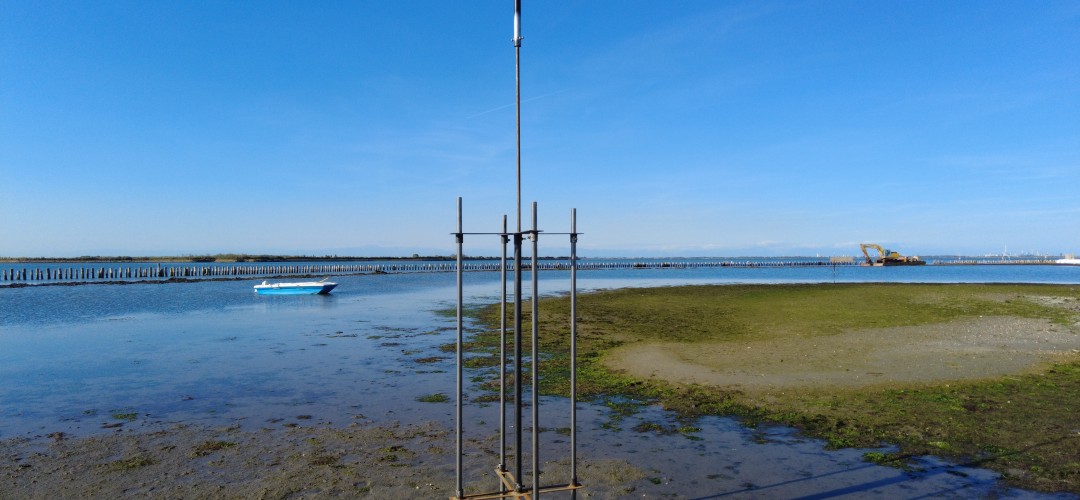Design of the NEC stations
Design of the NEC stations

A fundamental aspect of a salt marsh restoration project is the resulting ground-height relative to average water level in the long term. This is crucial for achieving the optimal ecological functioning of the system, as is the ability of the ground level to keep up with rising sea levels. Therefore, among the most important design parameters are the compaction of sediments used as in-fill and the lowering of the lagoon bed with the weight of the in-fill that forms the new area of future salt marsh. In order to monitor these dynamics of elevation change, Nourishment Elevation Change (NEC) stations have been set up in one of our pilot sites. These have been designed by engineer Claudia Zoccarato, handcrafted by a local metal worker and installed by a team from the University of Padova and the University of Wageningen, in the southern basin of the Venetian Lagoon.
These stations are anchored in the Lagoon to a depth of approximately two meters by four surrounding steel poles. The central pole moves freely in height, as the ground underneath is compressed by the sediments that will gradually accumulate in the nourishment area. The poles also have markings for drone readings to gauge compaction of the in-fill, due to settling when the waters mixed with the pumped sludge gradually drain away through the permeable boundary made of wooden poles and geotextiles.
◾